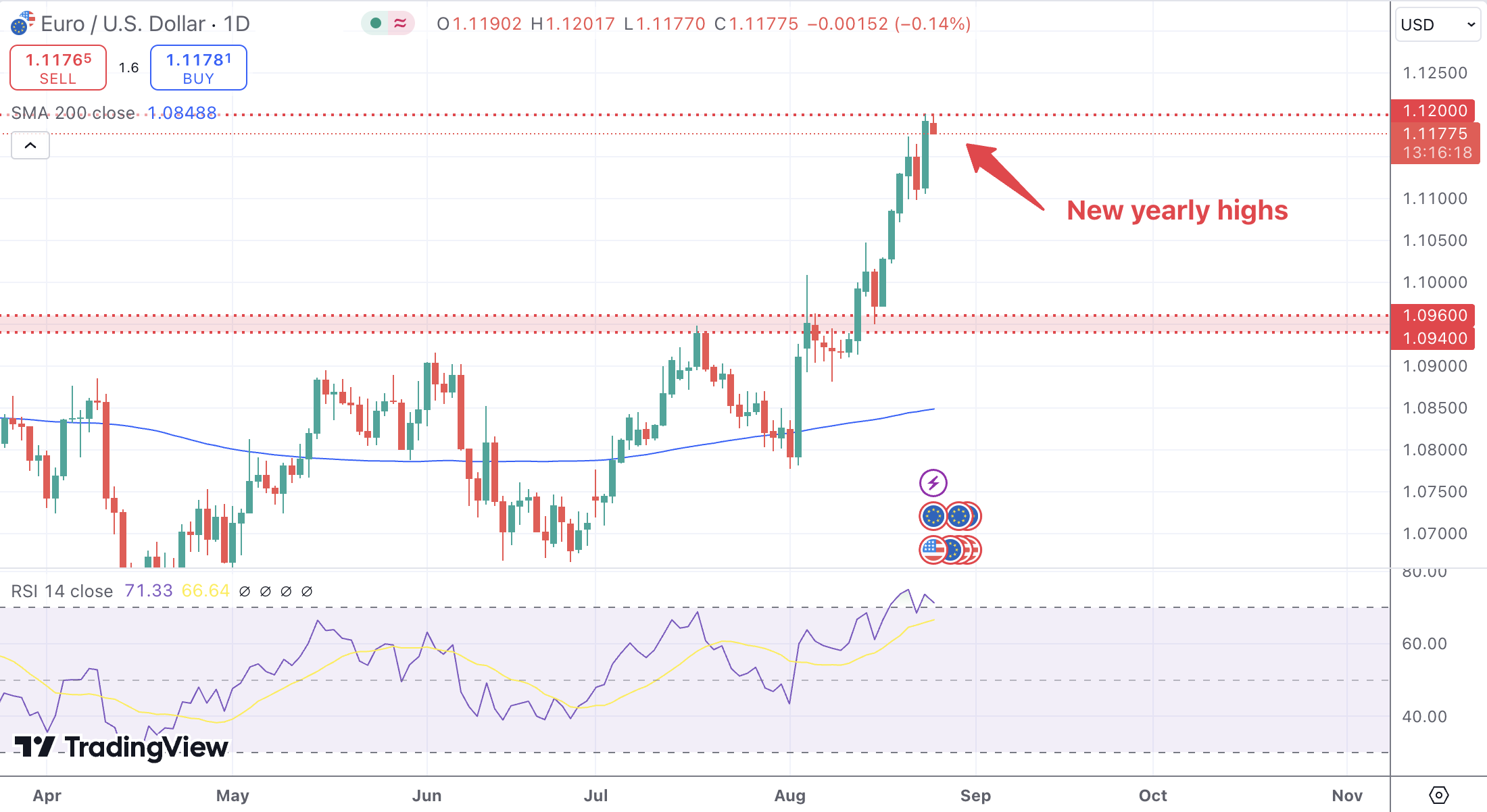Key Takeaways
- The EUR/USD pair has reached new yearly highs near 1.1200, driven by expectations of a Fed rate cut and relatively resilient Eurozone data.
- Technically, the pair remains in a strong uptrend, with key support levels well above critical moving averages.
- The divergence in Fed and ECB monetary policy continues to influence the pair, with the potential for further Euro strength in the short term.
- Upcoming economic data from Germany and the US will be pivotal in shaping the next phase of the EUR/USD’s movement, with the market closely watching for any surprises.
Market Dynamics and Recent Performance
The EUR/USD pair continued its upward momentum over the past week, reaching new yearly highs near the 1.1200 mark. This movement has been largely influenced by growing market expectations that the Federal Reserve (Fed) is poised to implement a rate cut in September, a sentiment reinforced by recent remarks from Fed Chair Jerome Powell. As the US Dollar faced mounting pressure, the Euro capitalized on this shift in sentiment, marking its fourth consecutive week of gains.
In addition to the Fed’s potential easing, the Euro has also benefited from relatively resilient economic data within the Eurozone, although concerns about a slowdown in key economies like Germany persist. The combination of these factors has bolstered the Euro, enabling it to challenge higher resistance levels as market participants adjust their positions in anticipation of further developments.
Technical and Fundamental Influences
Technically, the EUR/USD pair remains in a strong uptrend, supported by bullish indicators across multiple time frames. The pair has consistently traded above key moving averages, with the 200-day SMA acting as a significant support level. On the weekly chart, the pair has left behind critical resistance at 1.1063, further solidifying the bullish outlook. The daily chart shows that momentum remains robust, with indicators in overbought territory, yet suggesting that the current trend still has room to advance.
From a fundamental perspective, the potential divergence in monetary policy between the Fed and the European Central Bank (ECB) remains a key driver. While the Fed appears set to reduce rates, the ECB is also expected to ease further, albeit at a more gradual pace. This scenario could create a dynamic where the Euro remains relatively strong in the short term, especially if US economic data continues to show signs of resilience, limiting the downside for the Dollar.
Looking Forward
As the market looks ahead, the focus will be on upcoming economic data from both the US and Eurozone. Germany is set to release several key indicators, including the IFO Business Climate index, Q2 GDP growth data, and preliminary inflation figures. These releases will be closely watched as they could provide further insight into the health of the Eurozone’s largest economy and the broader region.
In the US, attention will be on any additional statements from Fed officials that could clarify the central bank’s intentions ahead of the September meeting. The market’s reaction to these developments will be crucial in determining the next moves for the EUR/USD pair, particularly if any surprises emerge from the economic data or central bank communications.


